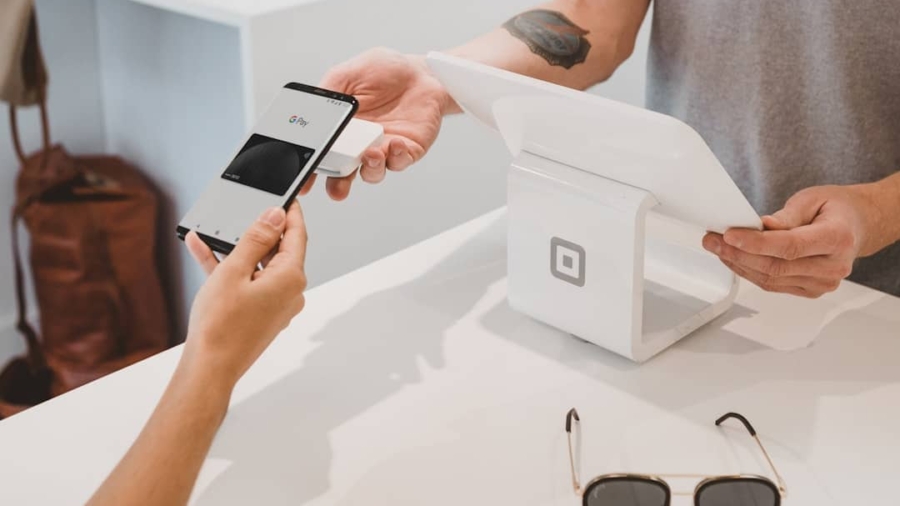Blockchain technology has emerged as a revolutionary force across various sectors, fundamentally altering how data is stored, shared, and secured. At its core, a blockchain is a decentralized ledger that records transactions across multiple computers in such a way that the registered transactions cannot be altered retroactively. This technology ensures transparency, security, and immutability, making it an attractive solution for industries ranging from finance to supply chain management.
The decentralized nature of blockchain eliminates the need for intermediaries, allowing for peer-to-peer interactions that can enhance efficiency and reduce costs. In the gaming industry, blockchain technology is beginning to reshape the landscape of digital ownership and item portability. Traditionally, players have invested significant time and money into acquiring in-game assets, yet they often lack true ownership of these items.
Game developers retain control over the virtual goods, which can lead to issues of trust and security. By leveraging blockchain, developers can create a system where players have verifiable ownership of their digital assets, enabling them to trade, sell, or transfer items freely across different platforms. This shift not only empowers players but also opens up new avenues for monetization and engagement within the gaming ecosystem.
Key Takeaways
- Blockchain technology is a decentralized and secure way of recording transactions and data, making it ideal for ownership and portability of game items.
- The problem of game item ownership and portability arises from centralized control by game developers, leading to limited transferability and potential loss of value for players.
- Blockchain solves the problem by enabling transparent and immutable ownership records, allowing players to truly own and transfer their game items across different platforms and games.
- Using blockchain for game item ownership and portability offers benefits such as increased player autonomy, reduced fraud and counterfeit items, and potential for new revenue streams through item trading.
- Challenges and limitations of blockchain in gaming include scalability issues, high energy consumption, and regulatory uncertainties, but real-world examples show its potential for revolutionizing the gaming industry.
The Problem of Game Item Ownership and Portability
The issue of game item ownership is a persistent challenge in the gaming industry. Players often invest considerable resources into acquiring virtual items, such as skins, weapons, or characters, yet these assets are typically confined within the boundaries of a specific game or platform. This lack of true ownership means that players cannot transfer their items to other games or sell them on secondary markets without the explicit permission of the game developers.
As a result, players are left with little recourse if a game shuts down or if they wish to move on to a different title. Moreover, the centralized nature of traditional gaming platforms raises concerns about security and trust. Players are vulnerable to account hacks, where their hard-earned items can be stolen without any recourse for recovery.
Additionally, developers can alter game mechanics or even remove items altogether, leaving players feeling disenfranchised. This situation creates a disconnect between players and their investments in virtual goods, leading to frustration and dissatisfaction. The inability to carry over items from one game to another further exacerbates this issue, as players are often forced to start from scratch when transitioning to new titles.
How Blockchain Solves the Problem

Blockchain technology addresses the challenges of game item ownership and portability by providing a decentralized framework for asset management. Each in-game item can be represented as a non-fungible token (NFT) on the blockchain, which serves as a unique digital certificate of ownership. This tokenization process allows players to have verifiable proof of ownership that is immutable and secure.
Once an item is minted as an NFT on the blockchain, it cannot be altered or deleted by any single entity, ensuring that players retain control over their assets. Furthermore, blockchain enables interoperability between different games and platforms. With standardized protocols in place, players can transfer their NFTs across various gaming environments seamlessly.
This means that a rare sword acquired in one game could potentially be used in another title that supports the same blockchain infrastructure. Such interoperability not only enhances player experience but also fosters a sense of community among gamers who can share and trade items across different ecosystems. By breaking down the silos that have traditionally existed in gaming, blockchain technology paves the way for a more interconnected and player-centric gaming landscape.
Benefits of Using Blockchain for Game Item Ownership and Portability
The adoption of blockchain technology in gaming offers numerous benefits that extend beyond mere ownership verification. One significant advantage is the potential for enhanced player engagement through true asset ownership. When players know they possess genuine ownership of their in-game items, they are more likely to invest time and resources into the game.
This sense of ownership can lead to increased loyalty and retention rates, as players feel more connected to their virtual possessions. Additionally, blockchain facilitates new economic models within gaming ecosystems. Players can buy, sell, or trade their NFTs on decentralized marketplaces, creating opportunities for monetization that were previously unavailable.
This not only empowers players to profit from their investments but also encourages developers to create more engaging content that resonates with their audience. The ability to generate real-world value from virtual assets can lead to a more vibrant gaming economy where both players and developers benefit from increased collaboration and innovation.
Challenges and Limitations of Blockchain in Gaming
Despite its potential advantages, the integration of blockchain technology into gaming is not without its challenges and limitations. One significant hurdle is the scalability of blockchain networks. Many existing blockchains struggle with high transaction volumes, leading to slow processing times and increased fees during peak usage periods.
For gaming applications that require real-time interactions and microtransactions, these limitations can hinder user experience and adoption. Moreover, there are concerns regarding environmental sustainability associated with certain blockchain technologies, particularly those that rely on proof-of-work consensus mechanisms. The energy consumption required for mining operations has drawn criticism from environmental advocates and may deter some developers from adopting blockchain solutions.
Additionally, regulatory uncertainties surrounding cryptocurrencies and NFTs pose challenges for developers looking to navigate compliance issues while innovating within the space.
Real-world Examples of Blockchain Implementation in Gaming

Several pioneering projects have successfully implemented blockchain technology within the gaming industry, showcasing its potential for transforming item ownership and portability. One notable example is Axie Infinity, a blockchain-based game where players collect, breed, and battle fantasy creatures called Axies. Each Axie is represented as an NFT on the Ethereum blockchain, allowing players to truly own their digital pets and trade them on secondary markets.
The game’s economy has flourished, with players earning real income through gameplay and trading. Another example is Decentraland, a virtual reality platform built on the Ethereum blockchain that allows users to create, experience, and monetize content and applications. In Decentraland, users can purchase virtual land parcels as NFTs, granting them ownership rights over their digital real estate.
This innovative approach has attracted artists, developers, and gamers alike who seek to explore new creative possibilities within a decentralized environment.
Future Outlook for Blockchain in Game Item Ownership and Portability
The future of blockchain technology in gaming appears promising as more developers recognize its potential to enhance player experiences through true ownership and portability of digital assets. As scalability solutions continue to evolve—such as layer-2 protocols or alternative consensus mechanisms—blockchain networks may become better equipped to handle the demands of high-volume gaming applications. Moreover, as regulatory frameworks surrounding cryptocurrencies and NFTs become clearer, developers may feel more confident in integrating blockchain solutions into their games.
The growing interest in play-to-earn models could further drive adoption as players seek ways to monetize their time spent in virtual worlds. As these trends continue to unfold, we may witness an increasing number of games embracing blockchain technology as a core component of their design philosophy.
Conclusion and Recommendations for Game Developers and Players
For game developers looking to leverage blockchain technology effectively, it is essential to prioritize user experience while ensuring that the integration of NFTs enhances gameplay rather than complicating it. Developers should consider implementing user-friendly interfaces that simplify the process of buying, selling, or trading digital assets while educating players about the benefits of true ownership. Players should remain informed about emerging trends in blockchain gaming and actively engage with communities that support decentralized ecosystems.
By participating in discussions around asset ownership and portability, players can advocate for features that enhance their gaming experiences while exploring new opportunities for investment and collaboration within this evolving landscape. As both developers and players navigate this transformative era in gaming, embracing innovation will be key to unlocking the full potential of blockchain technology in creating immersive and rewarding experiences.
If you are interested in exploring the latest technology trends, you may want to check out the article com/experience-the-power-of-samsung-galaxy-tab-s8-the-ultimate-tablet/’>Experience the Power of Samsung Galaxy Tab S8: The Ultimate Tablet.
Just like blockchain technology is changing the landscape of game item ownership and portability, the Samsung Galaxy Tab S8 is pushing the boundaries of what is possible in the world of tablets.
FAQs
What is blockchain?
Blockchain is a decentralized, distributed ledger technology that records transactions across multiple computers in a way that is secure, transparent, and tamper-resistant.
How does blockchain relate to game item ownership and portability?
Blockchain technology can be used to create unique digital assets, such as in-game items, and record ownership and transfer of these assets in a secure and transparent manner.
What are the benefits of using blockchain for game item ownership and portability?
Using blockchain for game item ownership and portability can provide players with true ownership of their digital assets, the ability to transfer items between different games or platforms, and protection against fraud and theft.
How does blockchain ensure ownership and authenticity of game items?
Blockchain uses cryptographic techniques to create unique digital signatures for each game item, which can be used to verify ownership and authenticity. Transactions involving these items are recorded on the blockchain, providing a transparent and immutable record of ownership.
Can blockchain be used for cross-platform item portability?
Yes, blockchain can enable cross-platform item portability by recording ownership and transfer of game items in a way that is not tied to any specific game or platform. This allows players to use their items across different games and platforms.

